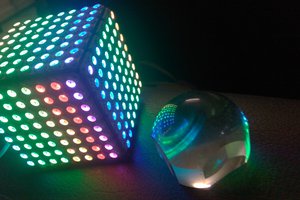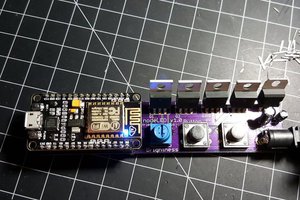We're shrinking the Las Vegas Sphere down to something you can hold in your hand! Each MiniSphere is 75mm in diameter and has 1080 LEDs, powered by a 7000mAh battery pack. They have an IMU for motion-based animations, and a UWB radio so they can sense where they are relative to each other.
 OK Design
OK Design




 Anool Mahidharia
Anool Mahidharia

 MobileWill
MobileWill
 Steph
Steph